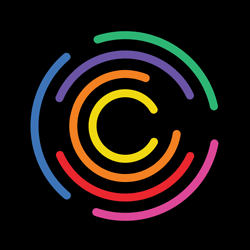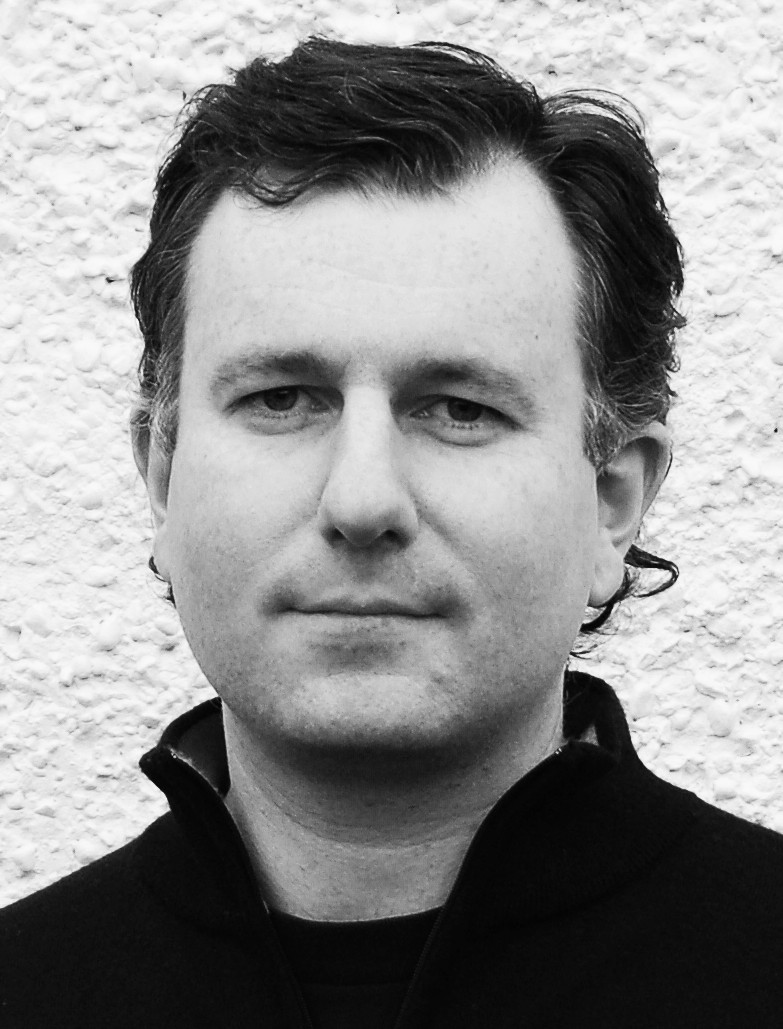This map shows the location of the people I follow on on Twitter .
Every day, I log onto the site via my laptop or phone, and scroll through a stream of short messages from these people. I find all kinds of things in my Twitter stream: what people are doing; what they are reading; links to interesting websites; jokes and banter; questions and answers; arguments; announcements; quotations. And so on.
There’s no way I could read every single message, so I don’t even try. Logging into Twitter is like walking into a party — I just listen to what people are saying now, and don’t worry about trying to hear every conversation at once. Sometimes I catch someone’s eye, and we’ll exchange a few words, other times it’s nice just to sit there and let the conversation wash over me.
I find a lot of interesting and useful things on Twitter, especially links that people share. But that’s not the real value of Twitter to me. The most important thing about this service is that it keeps me in touch with the people I’m interested in. It’s nice to hear what people are saying, but a lot of the pleasure of Twitter comes from having little reminders of the presence of these people in my life.
“Oh look, there’s John, good for him!”
Mark Earls has a term for this: phatic communication, in which the content of the message is often less important than its function as a gentle touch XYZ.
I haven’t met most of the people I follow on Twitter. But that doesn’t mean they’re not important to me. Two of them were my business partners for over two years. We still haven’t met face-to-face. We’ll get round to it one day. Most people I tell that to find it a bit odd. Yet these days, it seems perfectly normal to me.
Over the past five years I’ve got used to interacting and building professional relationships with people purely online. And if you want to achieve spectacular success in your creative career, that’s a skill you’ll need to develop. Otherwise, you’re limiting your potential customers and collaborators to people in your immediate geographical area. And that’s sooo 20th century. 🙂
Remember the weak ties from last week’s lesson? Twitter is a great place for weak ties. And light touches. John doesn’t need to interrupt my day with an e-mail or phone call to let me know about his Financial Times feature. He just puts it there on Twitter, for anyone who’s interested to see.
And it works both ways. I’ve received several e-mails beginning “I just saw you on Twitter, and it reminded me that I’d been meaning to get in touch with you about a project …”. Again, I don’t have to interrupt these people in the middle of something else, I just keep sending out little phatic reminders of my existence.
Not all of my Twitter followers will see all my Tweets, of course. But at the time of writing, there are just over 4,000 people following me, and every new follower increases my odds of connecting with the right person at the right time. The return on investment isn’t always as obvious as a new client commission, but every day I see evidence of the value of my Twitter network to my business, when I noticed people sharing links to my websites and talking about me to their followers.
You see, when someone mentions me on Twitter, it goes out to all of their followers — add the networks up, and on an average week I’m potentially making light, phatic contact with tens of thousands of people across the world.
If you can see the value of that kind of visibility to your career, here’s how to do it. (And if you’d like to follow me on Twitter, you can find me here: @markmcguinness)
1. Offline to online
Once upon a time, you’d return home from a conference or networking event with a stack of business cards representing potentially valuable business contacts. If you were super organised, you’d promptly enter them in your database so that you could retrieve their details at the touch of a button, and stay in regular contact. If you were anything like me, you’d put them in a box and forget where you put the box.
These days, when I meet someone interesting and want to stay in touch, I’ll ask if they are on Twitter. If they say ‘yes’, I’ll add them on the spot using my phone. From that point on, they will be a subtle, occasional presence in my life, popping up in my Twitter stream and nudging me to (a) check out their website and their work, and (b) stay in contact and keep the relationship going. Result.
If they say ‘no’, then things are a little more difficult. I’ll take a business card home, and if I’m having a reasonably quiet week, I’ll look up their website. If they have an interesting-looking blog or newsletter, then I may subscribe to it. More phatic nudges. If the website is not very interactive, and/or if I really want to stay in touch, I’ll look them up on LinkedIn and request to add them as a contact.
If I draw a blank on all of these, then the box awaits.
Russell Davies calls this process of adding new acquaintances to your online network social docking. But you can only ‘dock’ with someone if you’re using the same networks.
Let’s consider your own situation for a moment. When you meet a new and potentially valuable business contact, would you prefer to: (a) be a welcome an ongoing phatic present in their life; or (b) end up in their cardboard box?
I’m assuming that question is a no-brainer, which means if you’re not already using the same social network(s) as others in your field, now’s the time to start. If you’re not sure where to begin, have a look at my article The Top 10 Social Networks for Creative People. It includes plenty of quotations from users on how they use the networks, as well as interviews with some of the network founders.
2. Online
So now you’re on Twitter — or Instagram, or Facebook, or or whatever your peers are using. What should you do? How can you meet people? What should you say?
The answers are partly dependent on the type of network you’re using, and the nature of your work. But here are some basic principles:
Find your friends
I mean your real friends, colleagues and clients — the people you already know and want to stay in touch with. Most networks allow you to import a list of e-mail addresses, which they then match with your friends profiles, helping you to get started. Another way in is to find the profile of a popular friend, and look at their list of contacts, which should contain plenty of people you know.
Listen
Just like any other social gathering, it’s polite and politic to listen to other people’s conversations before joining in. That will help you tune into the topics and general social ambience, and could save you from making a social gaffe.
Join the conversation
But what should you say? Again, treat it like a normal social gathering, and you probably won’t go far wrong. When someone asks a question and you know the answer, speak up. If someone is telling a story and you think of a relevant point, chime in. If you have something interesting or useful to share (e.g. a link to a great article) share it.
Beware of over-sharing
I’m going to commit social media heresy by saying you shouldn’t share everything that’s going on in your life, or every thought that goes through your mind. This is a public forum remember, and you’re here in a professional capacity. Is it really a good idea to share all the details of what great time you had last night? Even if your life is squeaky clean, how interested will most people be in the details of your everyday life?
Personally, I’m a very active social media user but I hardly say anything about my daily life. Partly because I’m naturally quite a private person, but mainly because I can’t imagine anyone would be remotely interested in the fact that I’m eating breakfast or mowing the lawn. So my Twitter activity is split fairly evenly between sharing links to help and inspire my followers, and hanging out and exchanging chitchat and idle banter by the virtual watercooler. I regularly get people thanking me for the links I share on Twitter. Somehow I doubt I would get so many ‘thank you’s for describing my average day!
Be remarkable
I’ve left this point last, although it’s actually the most important one. Barack Obama didn’t get millions of Twitter followers and Facebook fans by spending all day networking on Twitter and Facebook. He got them by going out and doing something that made a difference. He and his team were very smart at leveraging social networks, but crucially he was using them to amplify his message and offline activities, for greater impact.
He’s an extreme example, but the same principle applies to you: if you’re doing something meaningful, original or remarkable, it will be much easier to grow your network online. Some people will have heard of you and want to get to know you. They’ll tell their friends, who will tell their friends, and so on.
3. Online to offline
Online relationships are real relationships. With real people. Friends ask me how I can really get to know someone online, let alone trust them enough to form a business together; but I’ve yet to meet someone in person who wasn’t pretty much the way I’d imagined them from their online presence.
On the other hand, there’s nothing like being able to talk to someone without having to hit ‘publish’ every time you make a remark, so take every opportunity to meet up with people face-to-face. Whether you’re going to your first social media group meetup, or meeting a online friend in person for the first time, there’s something magical about closing the loop in the ‘real’ world. To me, it feels like we’ve just beamed down from the Starship Enterprise.
Obviously you should take reasonable precautions – it’s probably OK to go to a Tweetup in a busy cafe with a group of people who use their real names and job titles on their profiles. But you might not want to respond to NightShadow666’s invitation to rendezvous in the middle of Exmoor at midnight.
Meetup.com – is a great site to find people organising events around common interests.
Worksheet
Podcast episodes
The following episodes of The 21st Century Creative Podcast touch on the themes of today’s lesson:
The Power of Community for Creative Professionals with Scott Belsky
Tina Roth Eisenberg’s Labours of Love
Other resources
Written by me, unless otherwise indicated
Find Your Medium, Choose Your Media
The Top 10 Social Networks for Creative People
7 Ways Social Media Helps with Business Networking by Chris Garrett
My Best Advice About Social Networking by Chris Brogan
A Simple Presence Framework by Chris Brogan
Make Your LinkedIn Profile Work for You by Chris Brogan
Use LinkedIn Effectively by Chris Brogan
Social Docking by Russell Davies
Tune in next week …
When we’ll look at what makes you unique and special enough to stand out from the crowd…
About The 21st Century Creative
Copyright © Mark McGuinness 2010-2019




